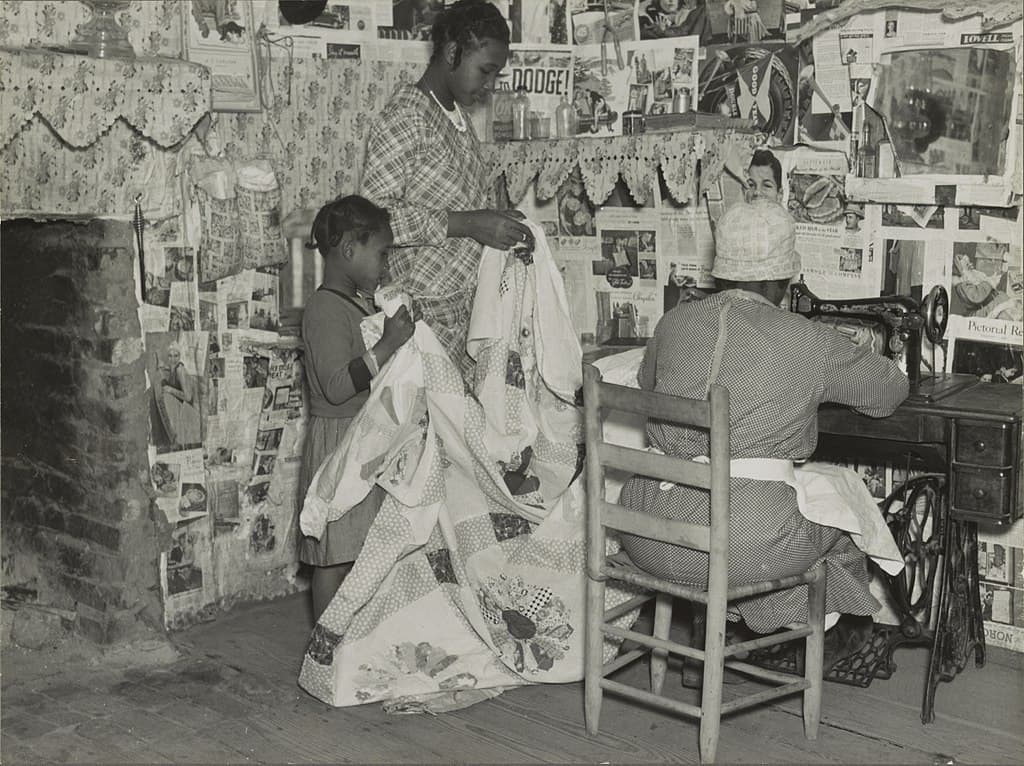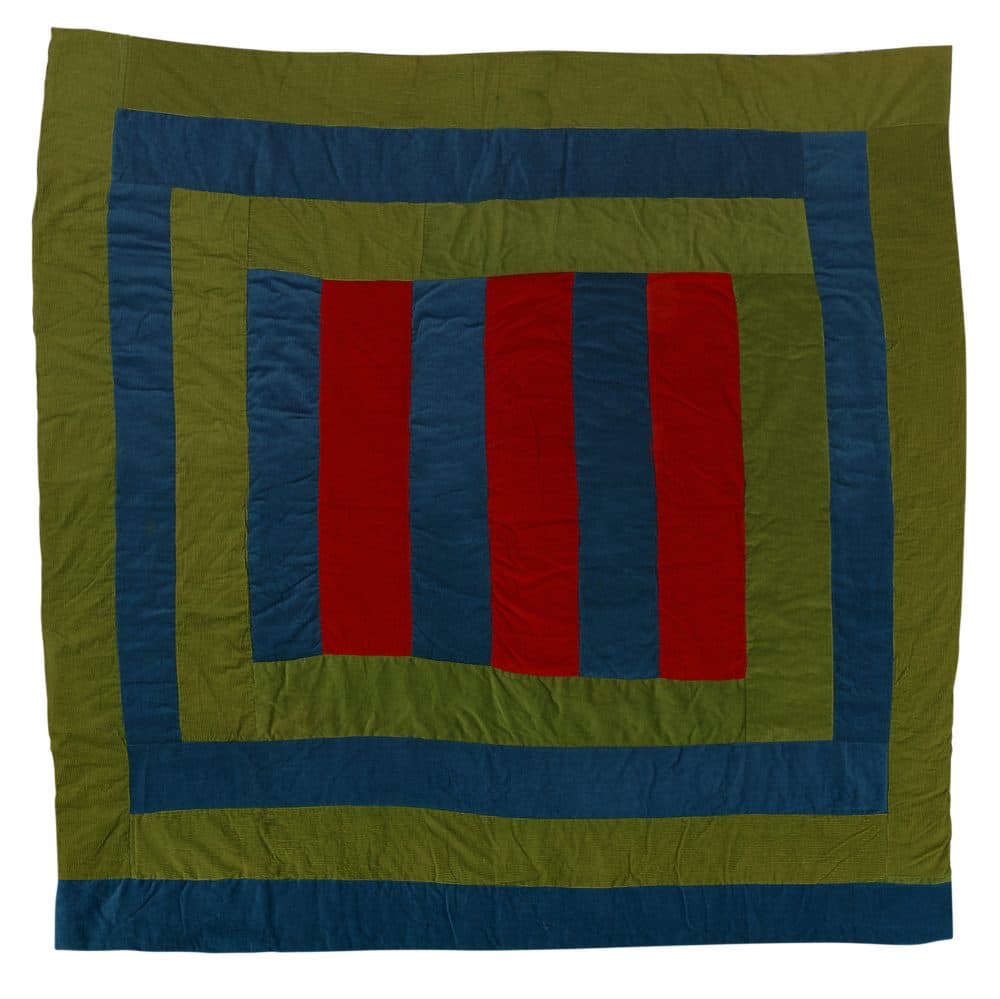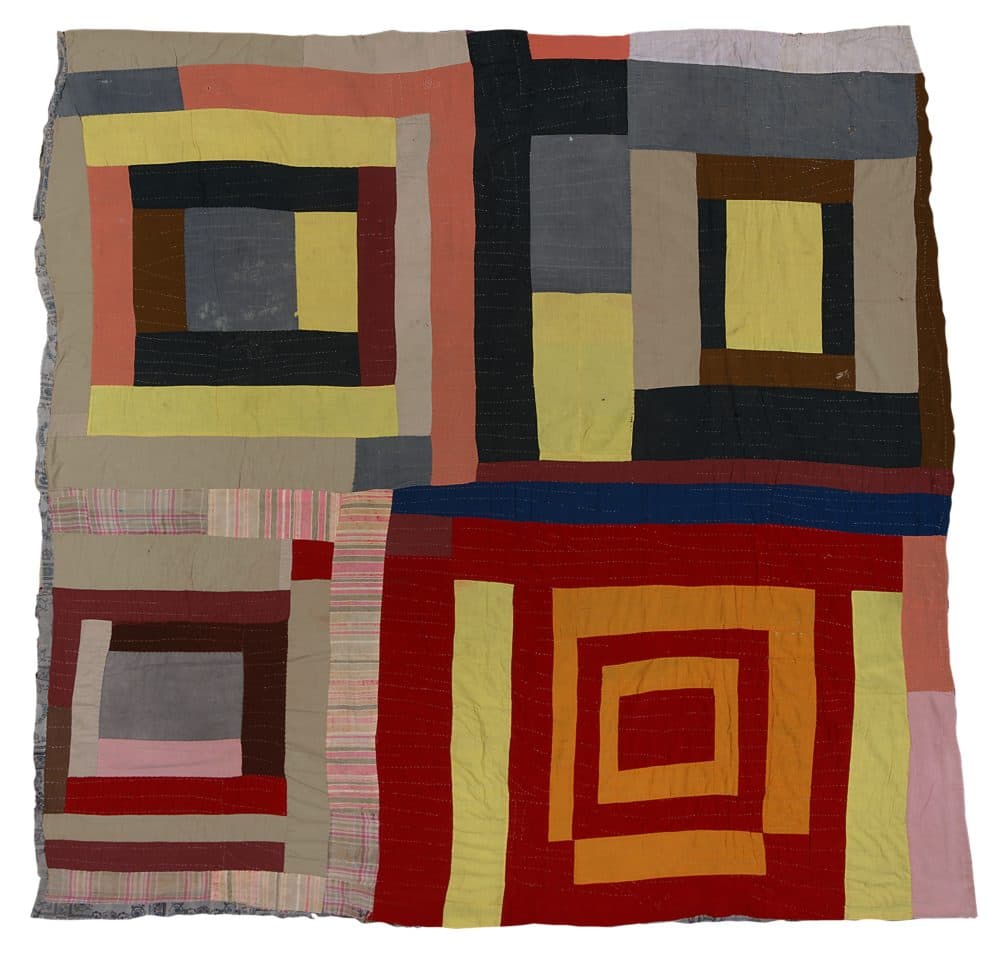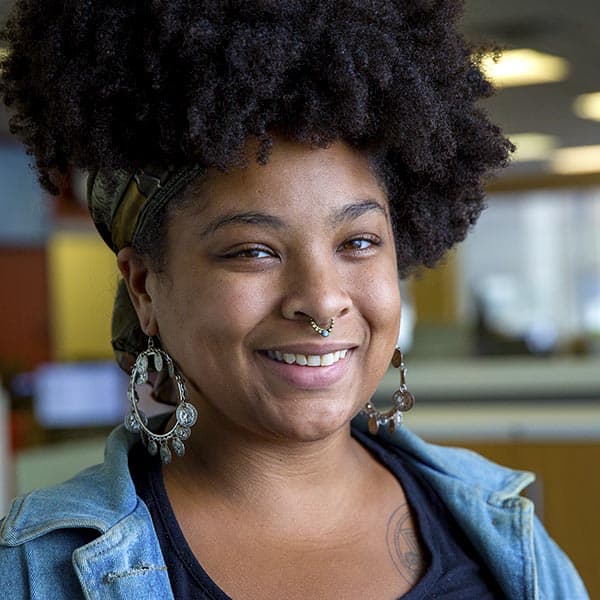Advertisement
Museum Of Fine Arts Acquires Historic Quilts From Community Who Traces Lineage To Slavery

Fabric can be so much more than just textile and thread. It can convey the stories of people and culture, seen and unseen, across time.
Twelve quilts made by the artisans of Gee’s Bend, Alabama — a community who can trace their ancestry to a specific group of enslaved persons — will become a part of the Museum of Fine Arts' collection this December. The acquisition comes from the Souls Grown Deep Foundation, a nonprofit organization dedicated to preserving and promoting the artwork by artists from the African-American South.
Created between 1935 and 1975, the quilts give critical insight into the varied and rich culture of black Americans living in the Deep South. “These quilts will really add depth to our existing textile collection,” said Lauren Whitley, the curator of Textile and Fashion Arts at the MFA. “The extensive history of the quilts and of Gee’s Bend add so much richness to the dialogue around American life and culture.”
Gee’s Bend is a rural and relatively isolated hamlet situated along the Alabama River. Many of the town’s predominantly black population can directly trace their lineage to the enslaved persons brought to the area to work on a cotton plantation established by Joseph Gee in 1816. When the Gee family sold the plantation in 1845, there were 45 enslaved blacks. After emancipation, many of the enslaved people stayed in the area. Over the years, the population fluctuated to its present day number of around 300 inhabitants.

This history entrenched in the soil of Gee’s Bend was transmuted into quilts made by the Gee’s Bend women, who often made the quilts for practical, household purposes. Isolation and lack of resources led to the ingenious use of reclaimed fabric from old clothing and textiles; this contributed to the unique style of Gee’s Bend quilts.
Vivid colors and inventive color blocking and composition highlight how the Gee’s Bend quilts deviate from the more symmetrical designs of Euro-American quilts. Mary L Bennet’s quilt “Diamonds” shows how this use of fabric can subtly traipse into the realm of surrealism.
One can trace the history of Gee’s Bend through the materials and the composition of the quilts. “Some of the quilts contain pieces of corduroy fabric,” Whitley said. “The corduroy actually came from Sears Roebuck, who hired the Freedom Quilting Bee in the '70s to make pillow shams. They used the leftovers and stitched them into their quilts.”

The quilt makers of Gee’s Bend were also heavily involved in the civil rights movement. Martin Luther King Jr. visited the hamlet in 1965, urging Gee’s Bend inhabitants to vote and to join the call for black liberation. These revolutionary sentiments were sewn into the quilts, exemplified by Irene Williams who created several quilts stitched over and over again with the word “vote."
The MFA’s acquisition of 12 of these Gee’s Bend quilts “will broaden the exposure of works by these important American artists among audiences around the country,” said Maxwell L. Anderson, president of the Soul Grown Deep Foundation.
The deep rooted history attached to the quilts will now have a permanent place on the walls of the MFA. “These quilts represent a connection between people and place,” said Whitley. “It’s up to us, as an institution, to make sure that we convey these stories of the American experience.”
